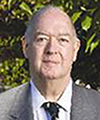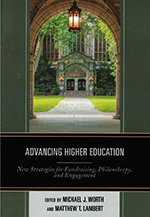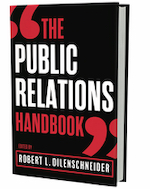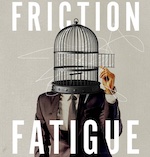 |
| Rene Henry |
A new book about fundraising in higher education has so many good ideas I believe it should be a “must-read” for anyone involved in fundraising.
The principles and strategies cited in “Advancing Higher Education – New Strategies for Fundraising, Philanthropy and Engagement,” (Rowman & Littlefield; Lanham, Maryland and London, England; 2019) are transferable to fundraising and public relations and marketing support in almost any area.
Editors Matthew Lambert and Michael Worth enlisted support from 21 of the nation’s leading fundraisers and foundation executives in higher education who wrote about successful campaigns, events and techniques in different chapters.
"Advancing Higher Education" also should be on the reading list of every college and university president, chancellor, provost, dean, member of a governing board and those involved in any way with fundraising, advancement, development, marketing and public relations.
 |
Worthy and Lambert write that significant technological, social, economic and political changes have created a new environment for fundraising in the second decade of the 21st Century.
The book has 20 chapters divided into seven subject sections, all with excellent and adaptable examples. As someone who was involved for many years in fundraising long before it was called advancement or development, I appreciated reading a section devoted to the history of fundraising.
"Advancing Higher Education" describes how development became synonymous with fundraising and then advancement was adopted as the umbrella concept that encompasses all of the related disciplines.
The editors described a number of early case histories of philanthropy that the late Scott Cutlip, considered by many as the father of public relations education, wrote about in his books. Some other interesting points noted in the book are:
* If millennials and post-millennials do not develop a habit of giving in their twenties and thirties, they are unlikely to be giving in later life.
* The rate of alumni giving back to their colleges and universities has declined, but overall giving to higher education is increasing.
* People born after 1980 are the beneficiaries of tens of millions of dollars, the largest transfer of wealth in history, and represent the future of philanthropy. Their purchasing power, which already is hundreds of billions of dollars, will steadily increase in the future.
* Digital technology has made it easier and less expensive for nonprofits to reach potential donors and has created a crowded marketplace for philanthropy.
* Women are major decision-makers regarding philanthropy and women are twice as likely as men to use their wealth for charitable purposes.
*Today, women have greater access to education, income and wealth but are underrepresented and under-asked as donors.
Gifts are now larger and more complex and donors have changed how they give and what they expect. Donors are motivated by many factors and influencers.
***
Rene A. Henry has authored 10 books and was involved in fundraising throughout his professional career, creating marketing and promotional materials, events and more for a wide range of institutions including a presidential library. Many of his commentaries are posted on his website, www.renehenry.com.


 Time correspondent Simon Shuster’s “The Showman” demonstrates how Ukraine president Volodymyr Zelensky’s masterful knowledge of PR tactics and the power of propaganda transformed him from comedian into a respected world leader.
Time correspondent Simon Shuster’s “The Showman” demonstrates how Ukraine president Volodymyr Zelensky’s masterful knowledge of PR tactics and the power of propaganda transformed him from comedian into a respected world leader. Iuliia Mendel, who served as press secretary for Ukraine president Volodymyr Zelensky from 2019 to 2021, will release a book called “The Fight Of Our Lives” in September, published by Simon & Schuster’s One Signal Publishers.
Iuliia Mendel, who served as press secretary for Ukraine president Volodymyr Zelensky from 2019 to 2021, will release a book called “The Fight Of Our Lives” in September, published by Simon & Schuster’s One Signal Publishers. Robert Dilenschneider, former CEO of Hill and Knowlton, is releasing the fifth edition of The Public Relations Handbook on Feb. 15.
Robert Dilenschneider, former CEO of Hill and Knowlton, is releasing the fifth edition of The Public Relations Handbook on Feb. 15.  Big Advertising may be down for the count, but the power of marketing lives on. That’s the big takeaway from Paul Dyer’s “Friction Fatigue,” a look at what advertising’s downward spiral means for “future-focused brands."
Big Advertising may be down for the count, but the power of marketing lives on. That’s the big takeaway from Paul Dyer’s “Friction Fatigue,” a look at what advertising’s downward spiral means for “future-focused brands." Sabrina Horn, the high-tech PR guru who sold her Horn Group to Finn Partners in 2015, has published “Make It, Don’t Fake It.”
Sabrina Horn, the high-tech PR guru who sold her Horn Group to Finn Partners in 2015, has published “Make It, Don’t Fake It.”


 Have a comment? Send it to
Have a comment? Send it to 
No comments have been submitted for this story yet.